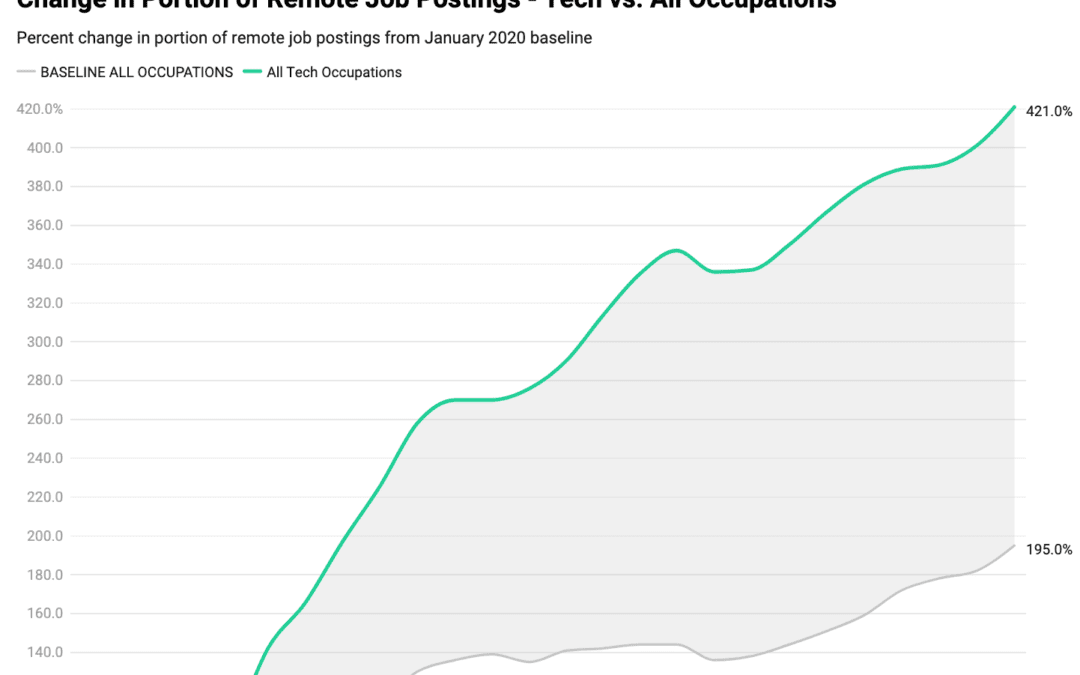By Kathy Henrich, CEO, MKE Tech Hub Coalition
Remote work – is it good or bad for the US, WI, and Milwaukee’s tech region?
My response has been that it is good for the region, but a risk to regional employers and the US. However, until today, there was no way to validate my assumptions with data.
TECNA, the national trade group for tech associations, just released a study on the impact of remote work since the start of the pandemic. Based on job postings data, a leading indicator of trends in employment, this report confirms a continued shift toward remote work for tech workers. Since the start of the pandemic the remote portion of tech postings is up 421%, compared to 195% for non-tech postings.
This can be good for areas outside of the traditional tech hub regions like Silicon Valley and New York. The report highlights that “hundreds of thousands of tech roles are being created in surprising places.” Wisconsin expanded slightly in tech jobs (0.9%) and recovering faster than our neighboring states (MI, IL, MN).
Wisconsin was also listed as one of the 25 states with the highest growth rates of tech worker profiles (increase of 6.6%) during the pandemic. This presents a significant opportunity as a future talent pool for our existing employees and to continue attracting companies to our region. This will boost the local economy, and continue to keep pace with other neighbors growing faster (TN, IN).
However, remote work is also a challenge for employers. With a historically low tech unemployment rate of 1.3%, regional employers are competing nationally at higher wages as national demand for tech talent far exceeds supply of workers.
And it creates risks as a nation: Remote work means that the roles are portable within the US and outside the US.
As we look at all the data coming out of the pandemic, we recommend:
1. Employers: Invest in a multi-pronged approach to gaining sufficient tech talent to drive their needs: college hires, mid-career attraction and retention, upskilling of existing talent, and reskilling talent into tech careers.
2. Wisconsin: Invest in both talent attraction and talent development. Public dollars are required to make reskilling and upskilling of existing WI talent financially equal to hiring out of state.
3. US: The Wall Street Journal article focused on expanding the H1B visas. We agree that this is one critical element, but also recommend investing in existing US workforce.
The migration of remote tech workers to the state during the pandemic shows that Wisconsin has the raw ingredients to attract tech talent. Cities in Wisconsin are attractive to the tech workforce as a place to live a great life and have a great career. We expect this trend will continue to increase as our state becomes a climate-safe haven.
Public and private dollars combined can capitalize on and accelerate this trend. The tech workforce grows our tax base, drives innovation in our companies, and secures our global competitiveness.


Recent Comments